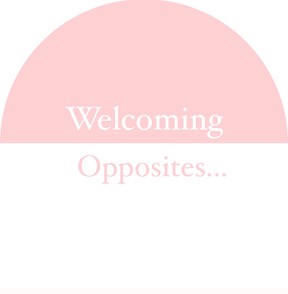My stepfather Al is dying. Like all humans, he’s been dying since he started living. But he’s truly at the end of his life now. In a week he’ll be 94. He’s got no cancer, no heart disease, no kidney or liver failure. He’s just very old and he’s dying.
I grew up without religion and never learned what happened after death. I wasn’t taught that there is a heaven or hell. I wasn’t taught about reincarnation. So I’ve made up my own belief system based on my personal life experiences.
As I sit on the sidelines watching Al moving into death, I find myself feeling a mix of emotions — a sadness at the thought of him no longer being here with us, but a sense of comfort knowing that he is going somewhere where I can still find him.
These past few weeks Al has moved more deeply into what is called “transitioning.” Transitioning — what a beautiful word. For transgender people, it means moving into a gender that feels more natural, more true to their being. For older women like me, it means moving from brown or blond or black or red hair to gray, the color that is meant for our older age.
For Al, transitioning means moving from this earthly realm to something different. He’s gone from active — eating, watching the news, talking to us — to a quieter space. Now he sleeps almost all the time. He’s moved inside of himself. I envision him gathering his energy, holding it close, wrapping it up, as his physical body slowly releases its grasp.
My father died 25 years ago at age 56. He was sick; filled with cancer. When he died he wasn’t ready. My brothers were still so young, just 12 and 14. They weren’t ready. I wasn’t ready. My father wasn’t ready. His transition was choppy, interrupted by the constant need to stay in this realm. I remember even the day before my father died I didn’t believe it would happen.
The further away from my father’s death I get, the stronger I feel his presence. As my sadness for my loss has taken up less space over time, my father’s spiritual presence has had more room to show up. I feel him all the time. I am not deep in grief at losing him anymore and so I can feel him come to me in other ways — memories, feelings, and unexplainable coincidences.
Al’s transition is very different from my father’s. In the stillness of Al’s body now there is a shift. The life force as we know it is slowing down, chugging along with minimal strength while a new energy moves its way through him , touching every part of his body like the stroke of a magic wand. Eventually, Al’s whole body will tingle with this new energy. He will have moved from alive to dead; he will have transitioned.
The dead part is just a stopping point, a place where we can say goodbye to the physical body, to clearly delineate the transition that’s been made. But I don’t believe it’s the endpoint. I never have. I will be sad when Al dies. When I imagine him gone I feel tiny cracks in my heart, little aches of missing his alive presence. But Al is ready to go, and I have faith that he’s transitioning into a good place.
I know so much more than I did those many years ago when my father died. I know that Al will come back to me in different, unexpected ways. I know that, like with my father, as my sadness of losing him becomes less potent, Al’s presence will grow stronger in my life. He won’t be here, on this earth with me. I won’t be able to hug him or hold his hand. I won’t be able to talk to him and hear his voice. But I’ll feel him. I’ll know he’s still here with me.
Postscript: Al died minutes after I finished writing this story.











